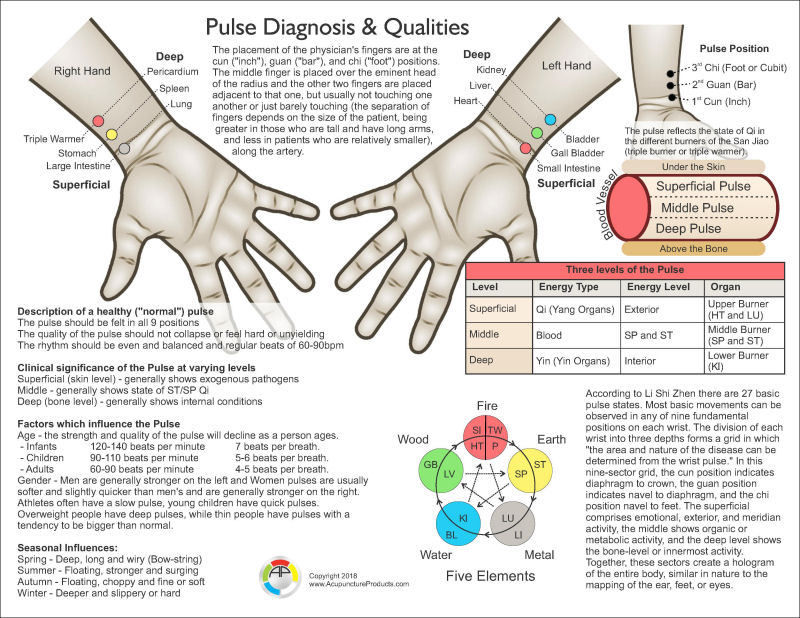
Pulse Diagnosis Acupuncture Chart
Your resting heart rate, or pulse, is the number of times your heart beats per minute when you are at rest — such as when you are relaxed, sitting or lying down. Resting heart rate varies from person to person. Knowing yours can give you an important sign of your heart health. What is a normal resting heart rate?
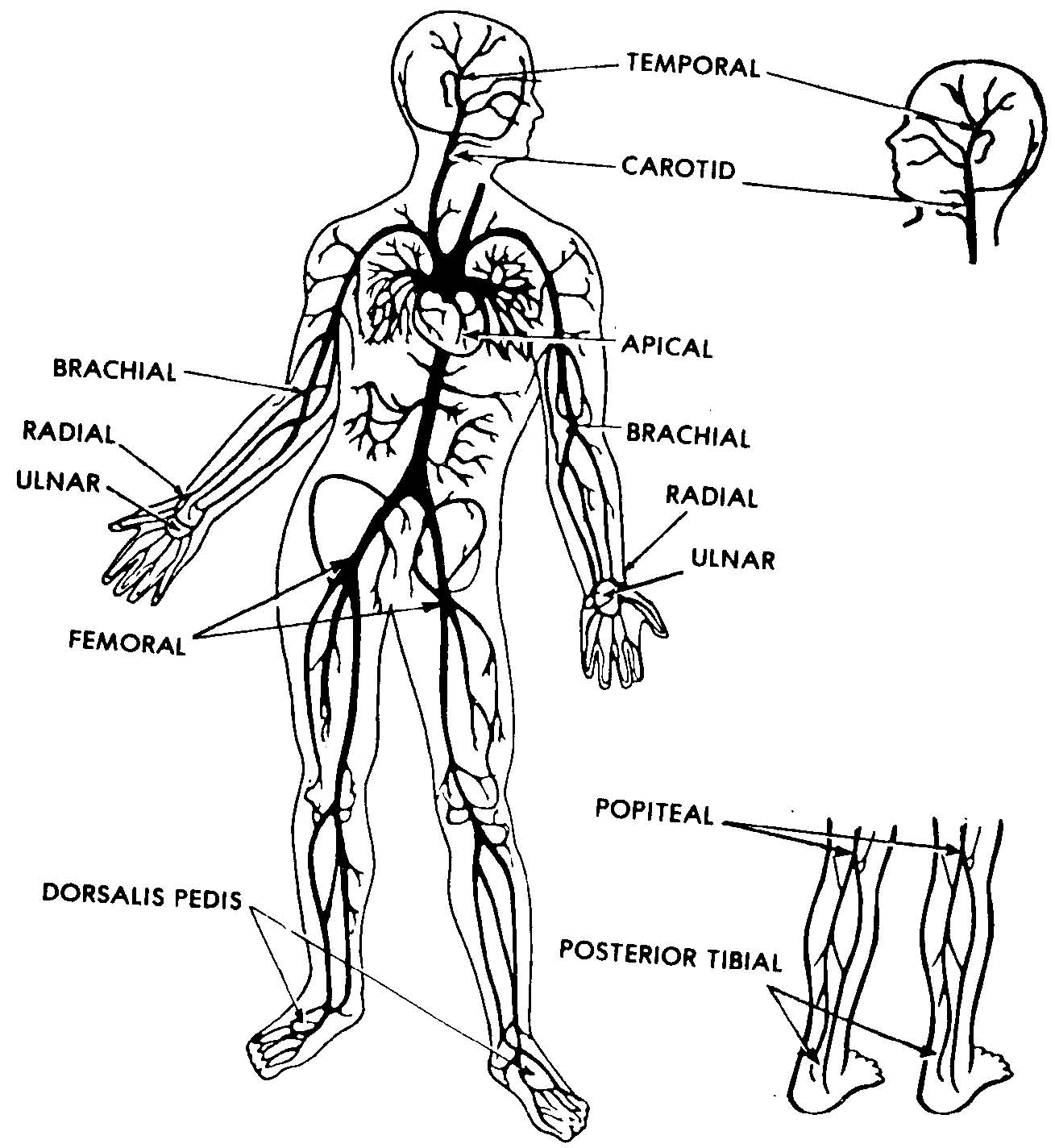
3.4 Which artery is palpated when a pulse is taken? Taking Vital Signs
In the head there are three pulse points (labelled above). They are: The carotid pulse - along the anterior border of the sternocleidomastoid muscle, the common carotid artery can be located and pushed against the thyroid cartilage. The facial pulse - as the facial artery passes over the angle of the mandible a pulse can be felt.
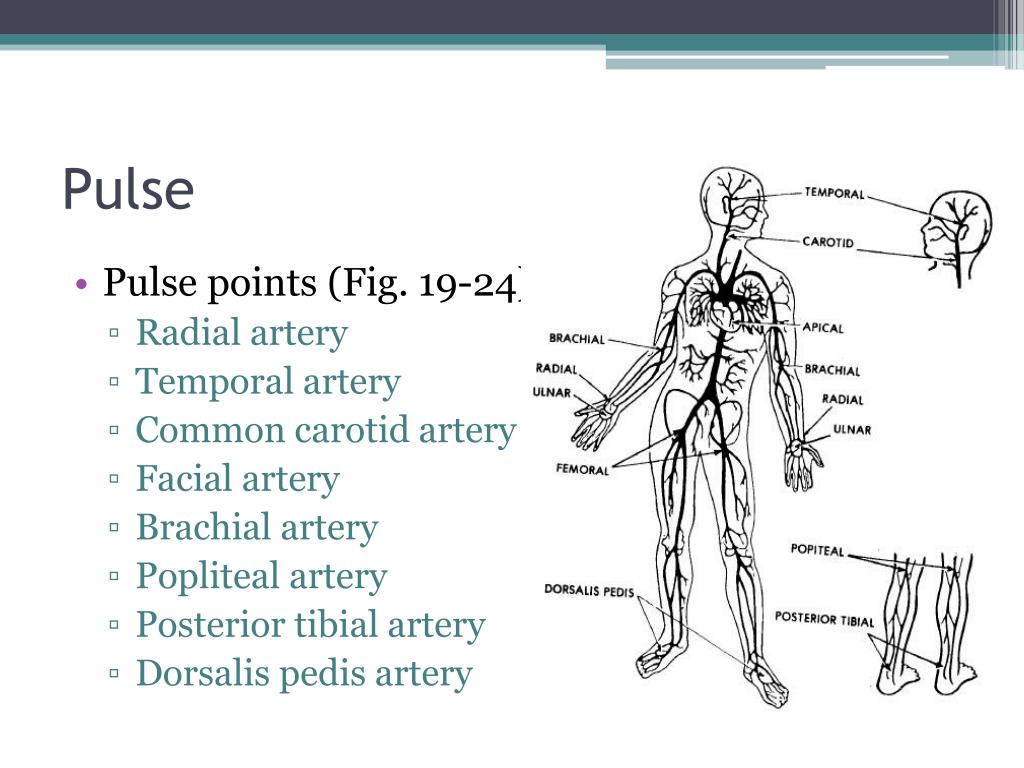
PPT Blood pressure & Pulse PowerPoint Presentation, free download ID4842068
Although the ECG can be used to determine the heart rate, a lot of useful information can also be determined from manual palpation of the patients pulse. To feel a pulse slight compression should be made to an artery located against a bone. The common pulse points are shown in Fig. 2.9. Manual inspection of the pulse should not be underestimated.
Pulse point labeling activity Labelled diagram
Pulse force is recorded using a four-point scale: 3+ Full, bounding; 2+ Normal/strong; 1+ Weak, diminished, thready; 0 Absent/non-palpable; Practice on many people to become skilled in measuring pulse force. While learning, it is helpful to assess pulse force along with an expert because there is a subjective element to the scale. A 1+ force.

Acupuncture pulse points used at the wrist. From Walker 1996 [34] (Used... Download Scientific
Carotid artery pulse - The common carotid artery is palpated on the neck below the jaw and lateral to the larynx/trachea (i.e., mid-point between your earlobe and chin) using the middle and index fingers.
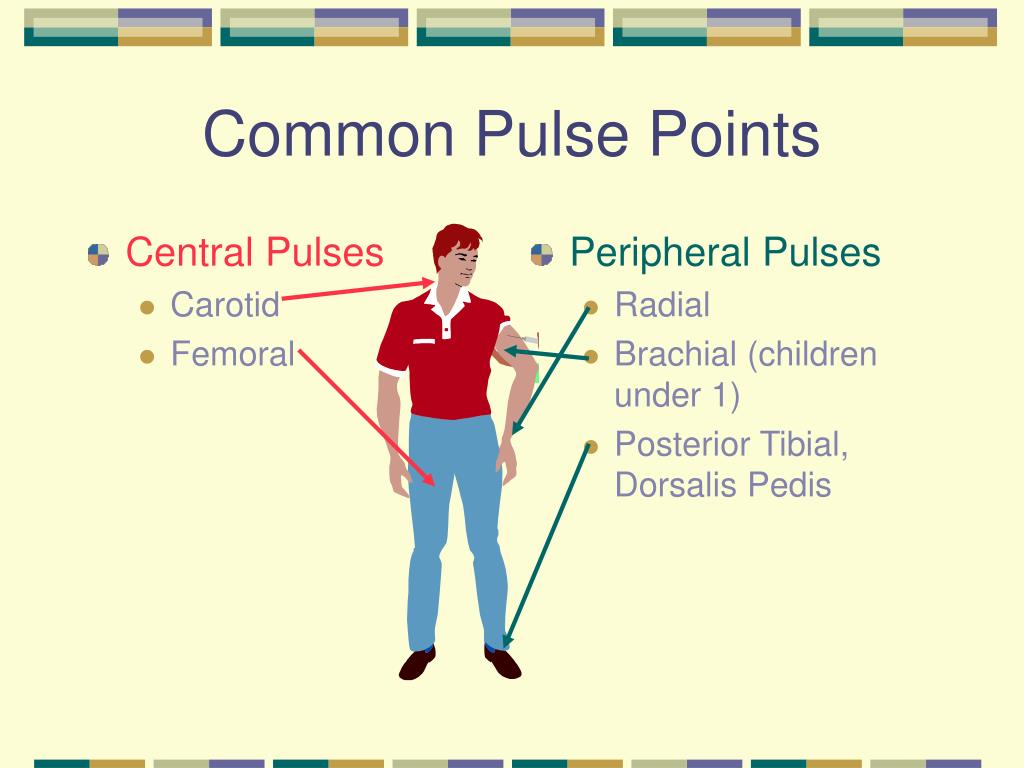
PPT Vitals and History Taking PowerPoint Presentation ID355610
Rate: A normal rate for an adult is between 60-100 beats per minute. However, depending on patient history this may differ. Therefore, it is important to watch a pulse rate trend over time. Rhythm: Patients without underlying arrhythmias should have a regular pulse. Symmetry: Pulse strength should be equal bilaterally.
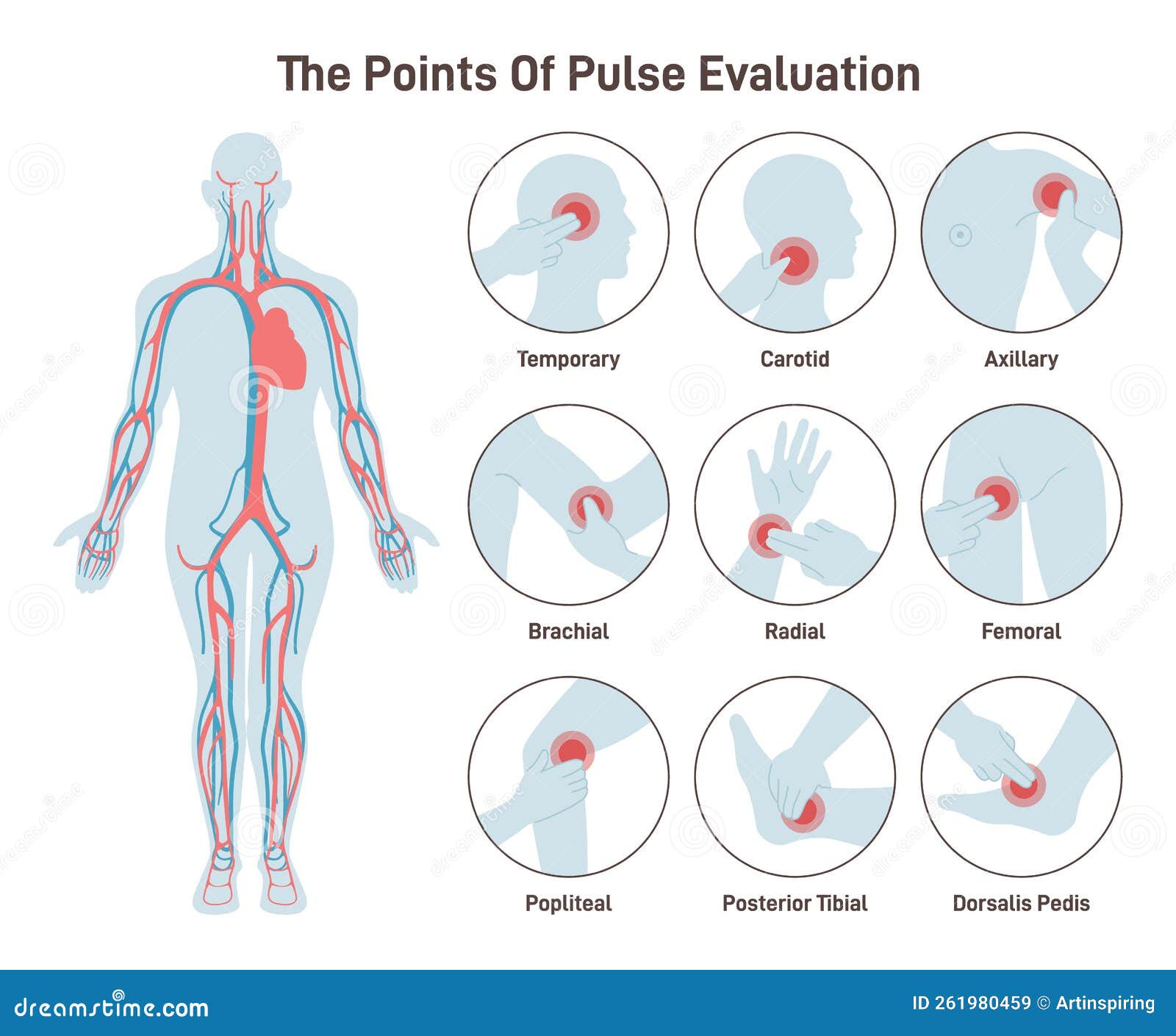
The Major Arteries and Pulse Points on Human Body. Heartbeat Evaluation Stock Vector
The nine pulse points on the body are important to learn as a nurse or healthcare professional. You'll be using many of these common pulse points during your assessments, such as the.

PPT Baseline Vital Signs PowerPoint Presentation, free download ID945627
Brachial Radial Femoral Popliteal Posterior Tibial Dorsalis Pedis Pulse Points Demonstration Temporal This artery comes off of the external carotid artery and is found in front of the tragus and above the zygomatic arch (cheekbone). This pulse point is assessed during the head-to-toe assessment of the head. Carotid
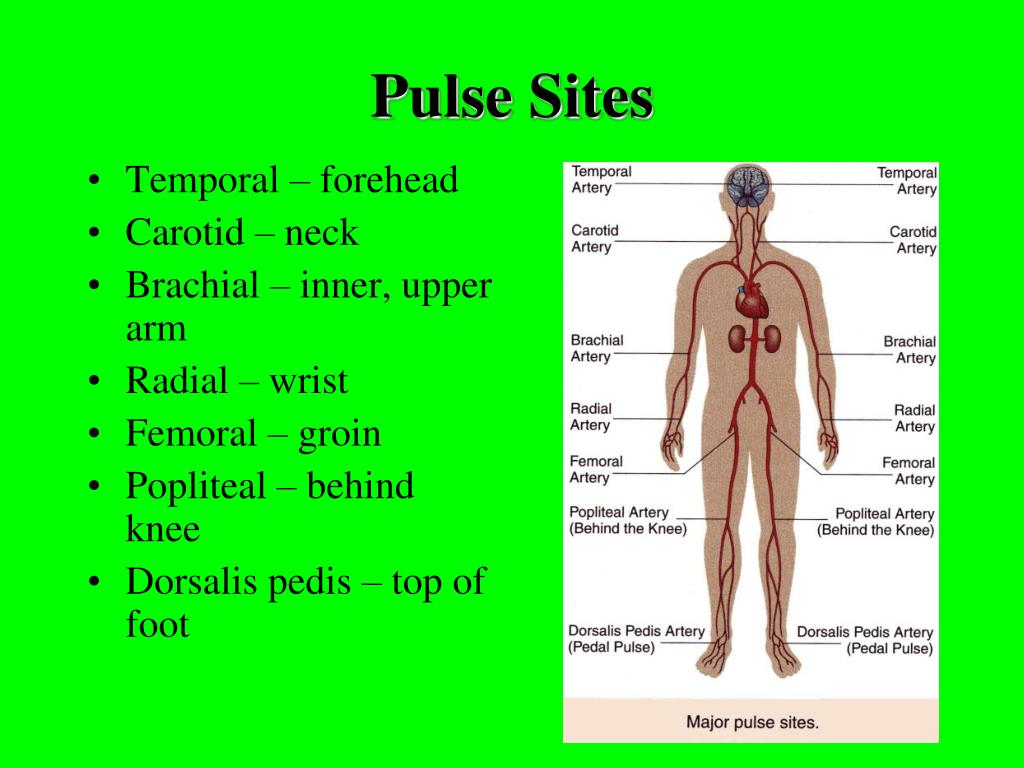
PPT Pulse PowerPoint Presentation, free download ID1258958
Normally, the pulse rate (pressure surges per minute) equals the heart rate, so the pulse averages 70 to 76 beats per minute in a normal resting person. Pressure points. There are several clinically important arterial pulse points, and these are the same points that are compressed to stop blood flow into distal tissues during hemorrhage , referred to as pressure points.

Surface Anatomy Pulse Points (2D) YouTube
Although the carotid pulse is important, there is much to be learned from an examination of all pulses bilaterally: subclavian, brachial, femoral, popliteal, posterior tibial, and dorsalis pedis. Palpation of the peripheral arteries can be performed whenever they are close enough to the skin surface to be compressed.
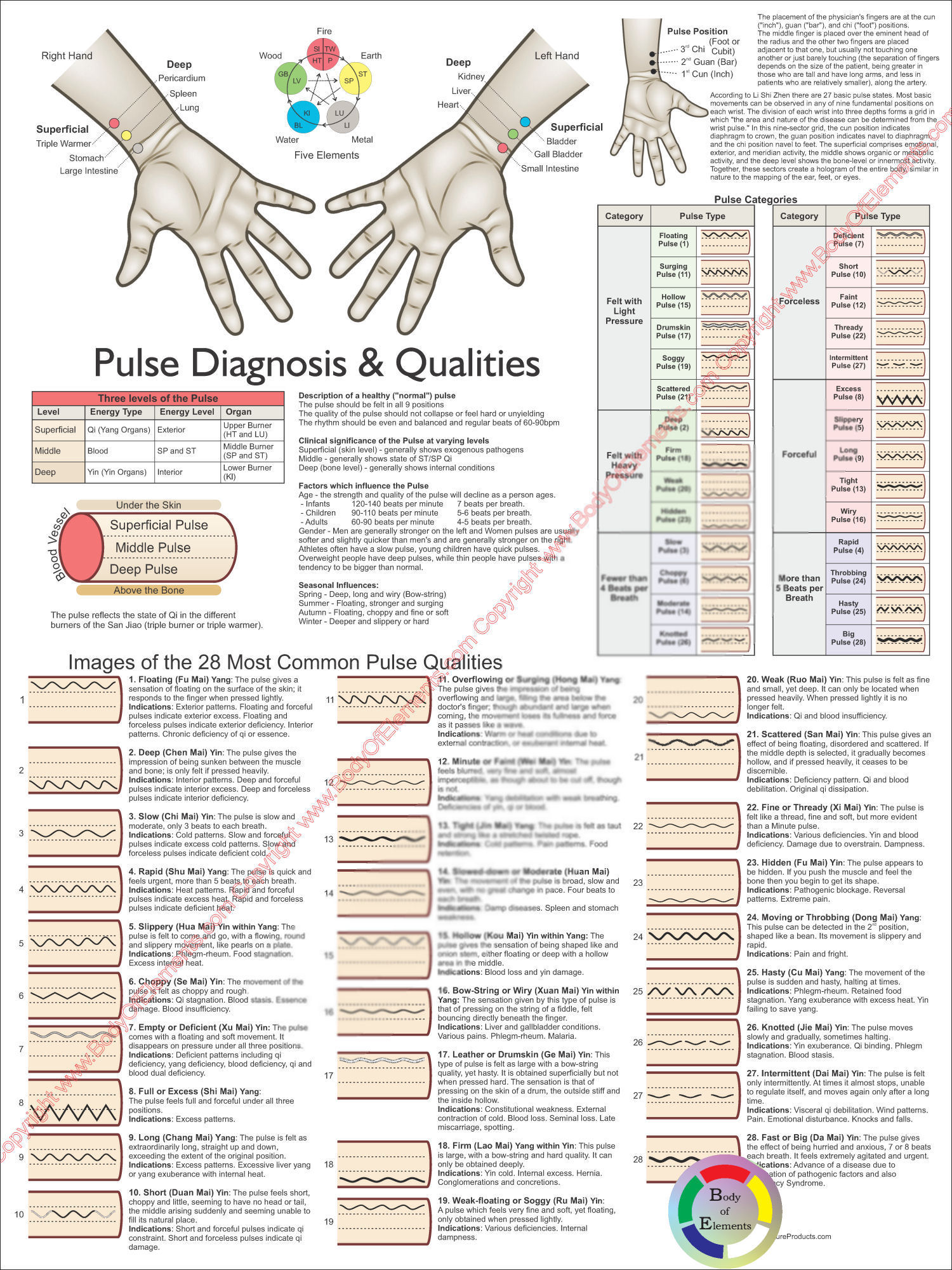
Pulse Diagnosis Acupuncture Poster 18 x 24
Pulse refers to a pressure wave that expands and recoils the artery when the heart contracts/beats. It is palpated at many points throughout the body. The most common locations to accurately assess pulse as part of vital sign measurement include radial, brachial, carotid, and apical pulse as shown in Figure 3.1.
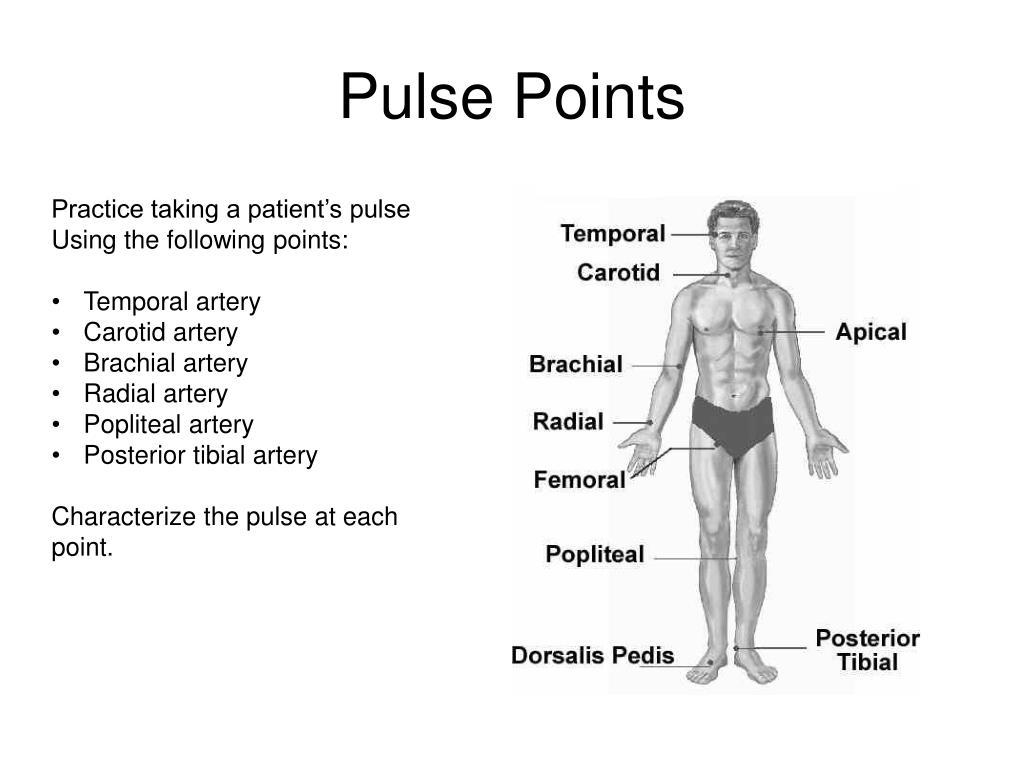
PPT Assessing Heart Rate & Blood Pressure PowerPoint Presentation ID2135922
Definition The femoral pulse point is located at the inner aspect of the upper thigh where the thigh joins with the trunk of the body. Location Term Popliteal Definition The popliteal pulse point is located behind the knee.

Peripheral Pulse Locations Diagram Quizlet
Pulse & Heart Rate. Your heart rate is the number of times each minute that your heart beats, which is normally between 60 and 100 times per minute for adults. Your pulse is a way you can feel each time your heart beats. Measuring your heart rate helps you monitor your own health and know if you're exercising at the right level to get the.
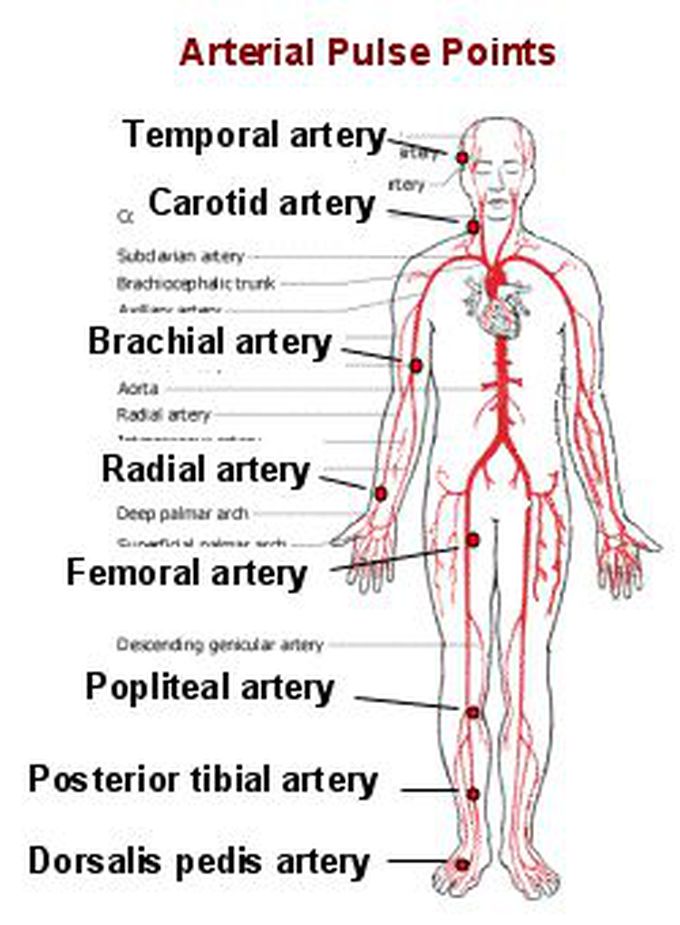
PULSE POINTS MEDizzy
A peripheral pulse refers to palpating the high-pressure wave of blood moving away from the heart through vessels in the extremities following systolic ejection. This phenomenon is often readily palpated and serves as a useful clinical tool, comprising one of the most commonly performed physical examination maneuvers at every level of medical care.

10 common pulse points in the human body Medical student study, Medical awareness, Medical videos
definition, characteristics of pulse, normal pulse rate, factors influencing pulse rate, 9 common pulse points on the body, and how to locate pulse sites Definition of the pulse The pulse can be defined as a rhythmic wave of pressure formed by the expansion of an artery due to the heart's contraction of the left ventricle.

Pulse and Blood Pressure Vital Signs Vital Signs
Knowing your heart rate can help you gauge your heart health. General instructions for taking your pulse To get an accurate pulse: Take your pulse at the same time each day. Sit down and rest several minutes before taking your pulse. Count your pulse for a full 60 seconds unless told otherwise by your health care provider. Taking your radial pulse